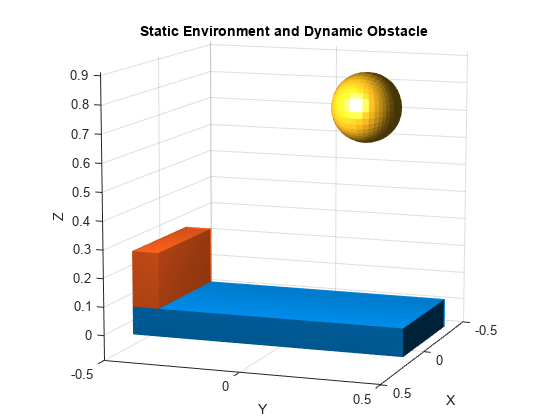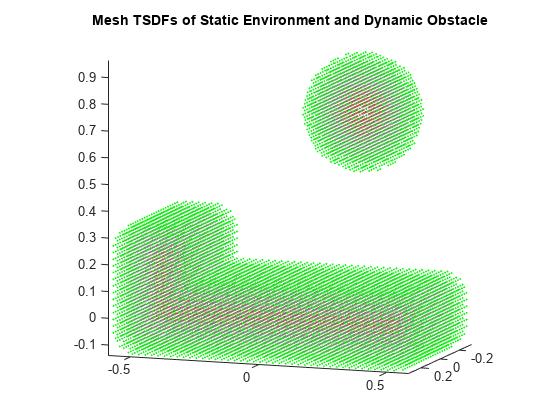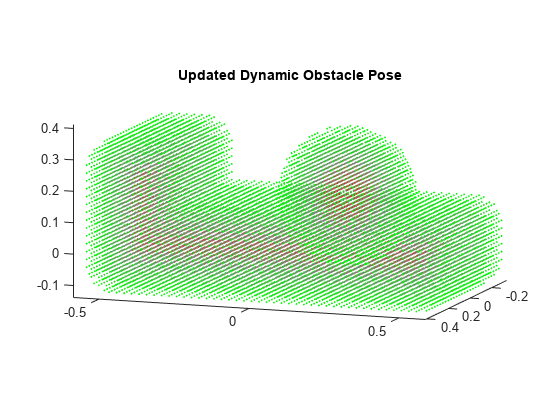meshtsdf
Description
The meshtsdf discretizes meshes and stores their associated
truncated signed distance fields (TSDF) over a voxelized 3-D space. Voxels that are outside of
a mesh contain positive distances and voxels that are inside a mesh have negative distance.
Any voxels that are more than a specified truncation distance from meshes have values equal to
the truncation distance. Once you create the TSDF, you can modify the poses of meshes and get
updated distance and gradient information over the discretized region.
Creation
Description
mTSDF = meshtsdf
mTSDF = meshtsdf(meshStruct)geom2struct
function to convert geometry objects into an array of mesh structures.
mTSDF = meshtsdf(___,Name=Value)meshtsdf(TruncationDistance=10) sets
the truncation distance to 10 meters.
Input Arguments
Properties
Object Functions
activeVoxels | Return information about active voxels |
addMesh | Add mesh to mesh TSDF |
copy | Deep copy TSDF |
removeMesh | Remove mesh from mesh TSDF |
distance | Compute distance to zero level set for query points |
gradient | Compute gradient of truncated signed distance field |
poses | Get poses for one or more meshes in TSDF |
updatePose | Update pose of mesh in TSDF |
show | Display TSDF in figure |
Examples
Limitations
meshtsdfsupportspackNGo(MATLAB Coder) only for MATLAB® host targets.
References
[1] Zhao, Hongkai. “A Fast Sweeping Method for Eikonal Equations.” Mathematics of Computation 74, no. 250 (May 21, 2004): 603–27. https://doi.org/10.1090/S0025-5718-04-01678-3.
Extended Capabilities
Version History
Introduced in R2024a
See Also
Topics
- Pick-And-Place Workflow Using CHOMP for Manipulators (Robotics System Toolbox)


